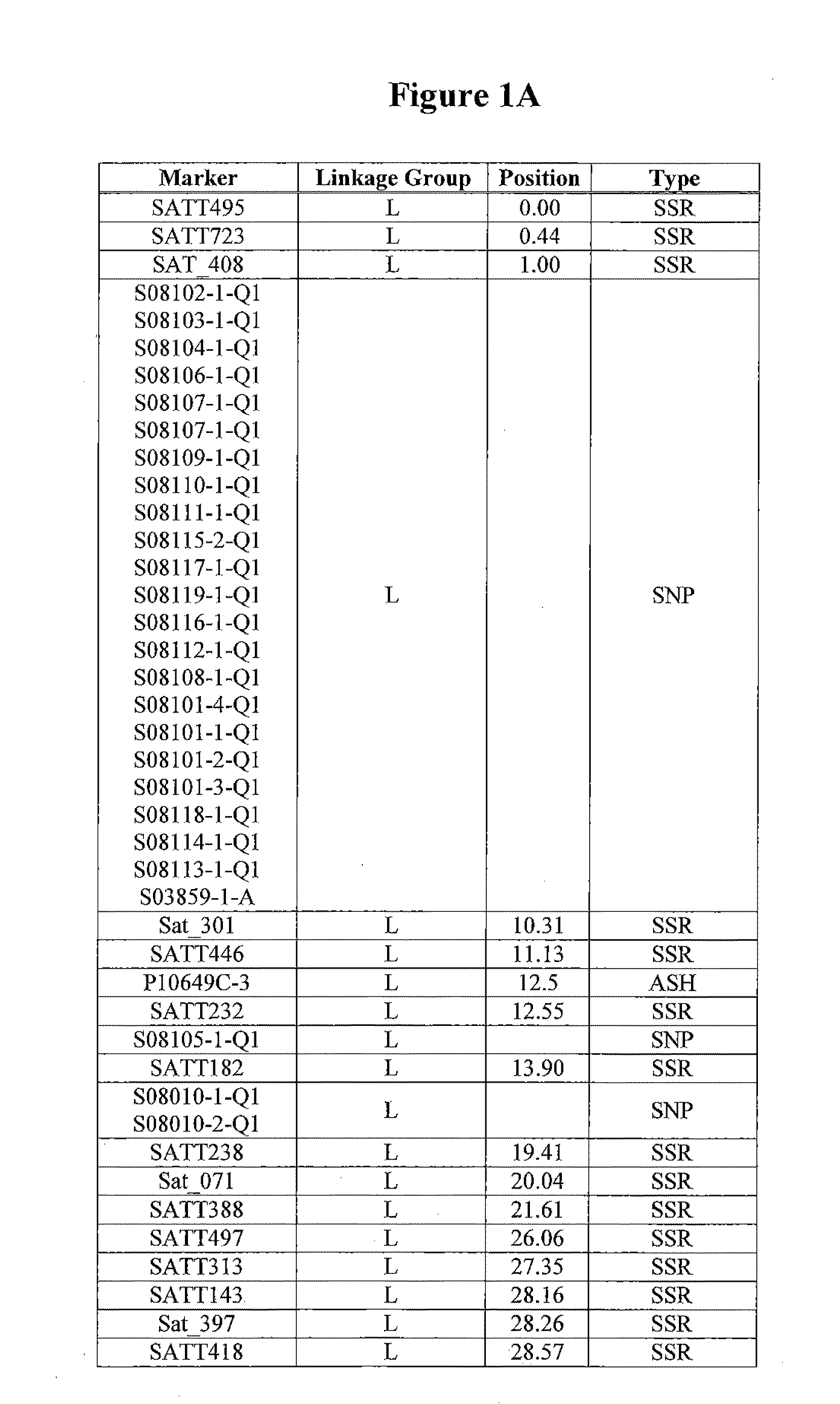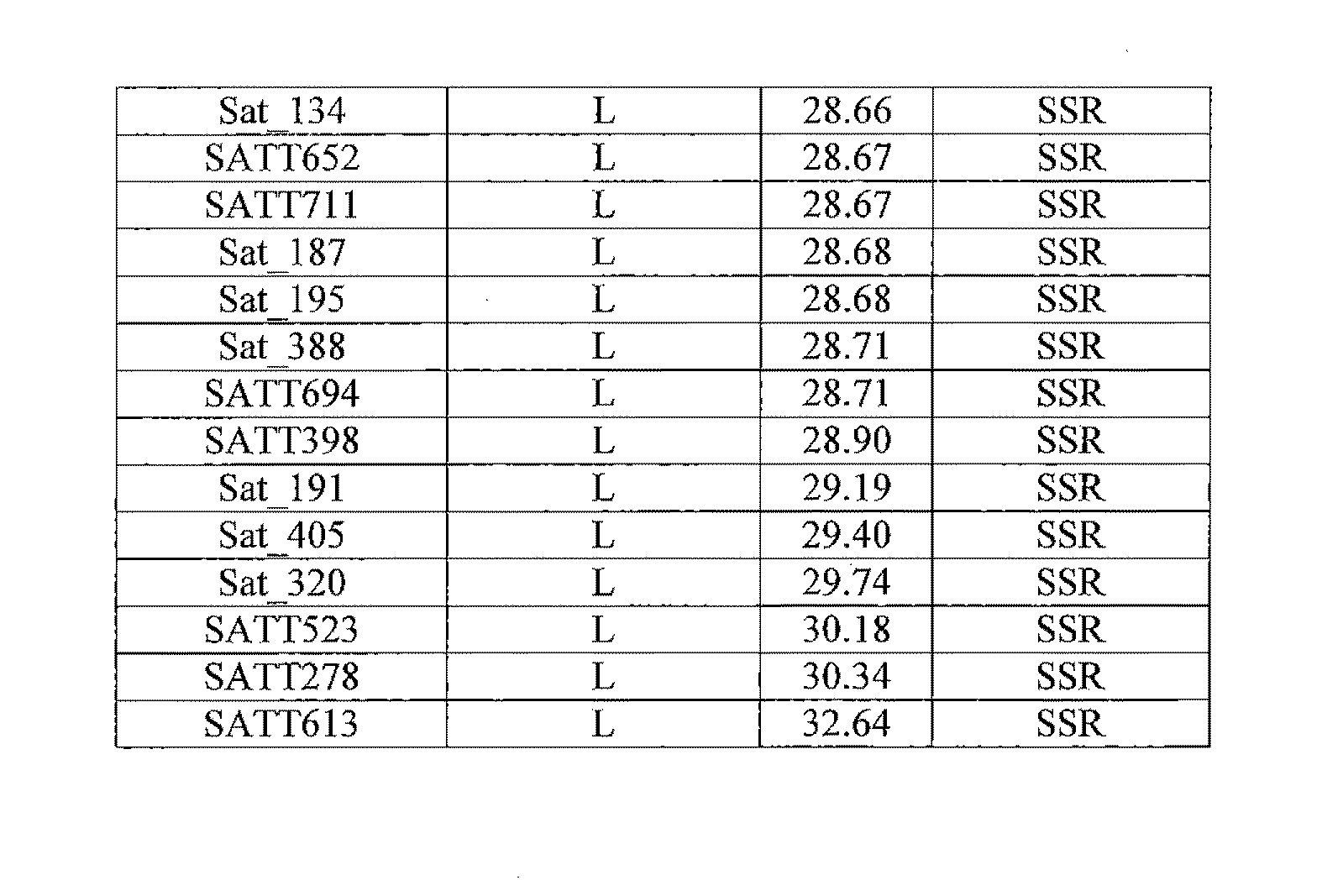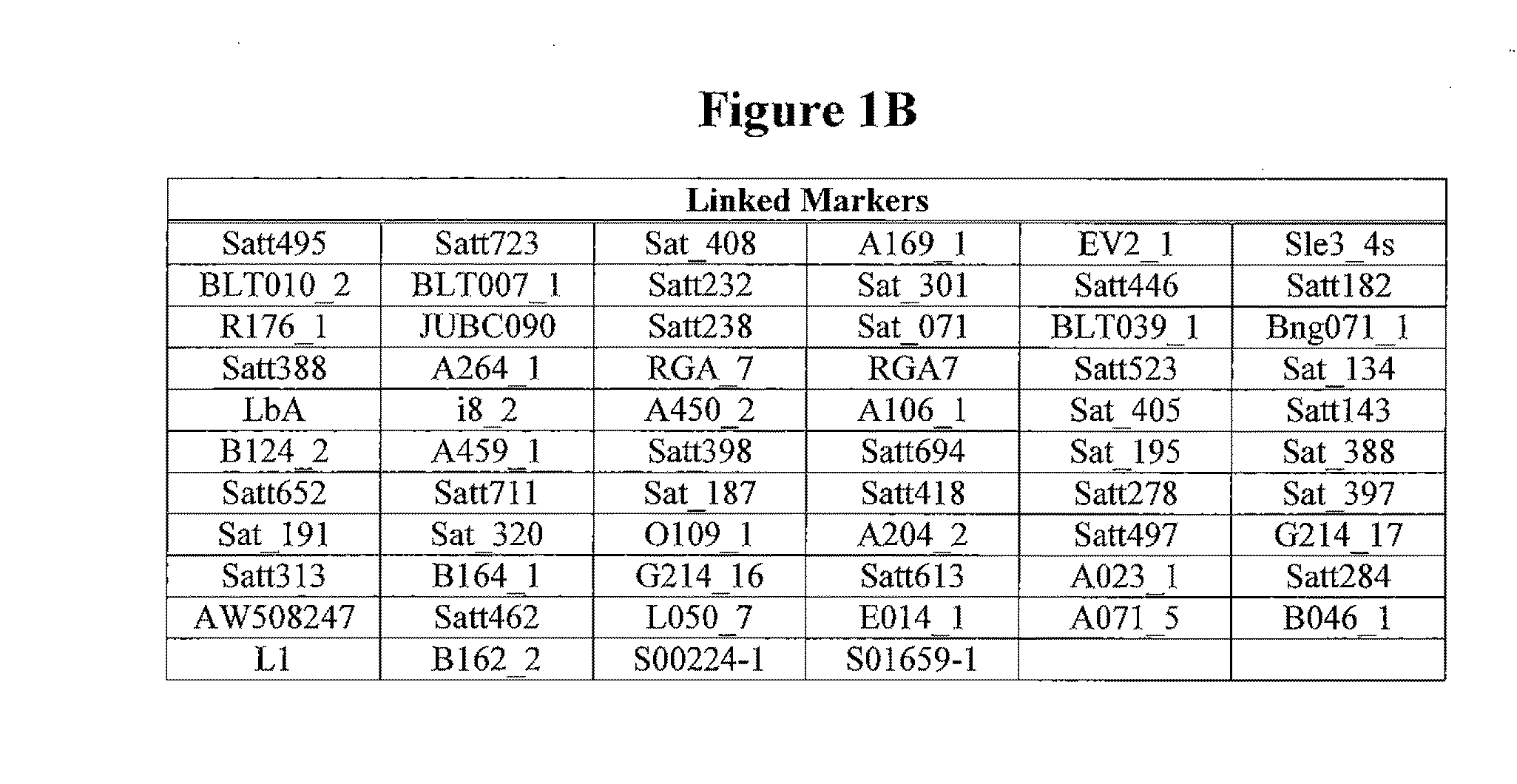Hppd-inhibitor herbicide tolerance
a technology of herbicides and inhibitors, applied in the field of soybean genetic differences detection, can solve the problems of farmers' lower yields, and achieve the effect of negatively affecting the crop
- Summary
- Abstract
- Description
- Claims
- Application Information
AI Technical Summary
Benefits of technology
Problems solved by technology
Method used
Image
Examples
example 1
Identification of Isoxafutole Tolerant and Sensitive Soybean Lines—Herbicide Screening Bioassay and Intergroup Association Marker Based Diagnostic
[0270]Two soybean mapping populations were used to confirm significant QTLs related to tolerance and susceptibility to mesotrione and / or isoxazole herbicides, to identify any potential QTLs associated with the tolerance or susceptibility to these herbicides, and to identify any varietal variation due to differences between the two herbicide chemistries used in the study. The mesotrione herbicide used in this study was Callisto® (referred to as Herbicide B); the isoxazole herbicide used in this study was Balance Pro® (referred to as Herbicide A).
Part 1:
[0271]Studies were conducted using herbicides A and B and were performed at two locations, Princeton, Ill. and Johnston, Iowa. Herbicide screening protocols developed in the summer of 2008 determined the optimum herbicide rate, application timing and the best time to evaluate soybean injury f...
example 2
Determination of QTL and Marker Associations / Intergroup Analysis
[0300]There was significant (P<0.001) difference across varieties for Herbicide A. The LSD was 1.316 across all varieties. Predicted means by location were calculated using a linear model for the locations. The varieties were looked at individually by the adjusted means by location, the LSD value, the average score by location, and the 2008 data for each variety. This gave an overall view of each variety and allowed for a simple classification across all varieties. Any variety that showed a high rate of variability across the data was automatically placed in the segregating group.
[0301]The results of the ANOVA for both Herbicides A and B are reported in Table 4. The model used for the analysis was the incomplete block design and the affect of the model is described through the relative efficiency and the Czekanowski Coefficient (Czek Coeff). The relative efficiency is comparing the error terms of the more complex block ...
example 3
Identification of Sulfentrazone Tolerant and Sensitive Soybean Lines—Herbicide Screening Bioassay and Intergroup Association Marker Based Diagnostic
[0314]Sulfentrazone is a PPO inhibitor and is the active ingredient in Authority® herbicide. Authority® 75DF (FMC Corp., Philadelphia, Pa., USA) is a 75% active ingredient formulation of sulfentrazone containing no other active ingredients.
Part 1: Herbicide Bioassay
[0315]One hundred sixteen (116) elite soybean lines were screened for sulfentrazone tolerance using the following protocol. Seed of soybean varieties with adequate seed quality, having greater than 85% warm germination were used.
DESIGN AND REPLICATION: After planting, entries were set up in a randomized complete block design, blocked by replication. Three replications per experiment were used. One or more of well established check variety were included in the experiment, such as available public sector check lines.
Non-tolerant check: Pioneer 9692, Asgrow A4715
Tolerant check: P...
PUM
| Property | Measurement | Unit |
|---|---|---|
| spray pressure | aaaaa | aaaaa |
| depth | aaaaa | aaaaa |
| depth | aaaaa | aaaaa |
Abstract
Description
Claims
Application Information
 Login to View More
Login to View More - R&D
- Intellectual Property
- Life Sciences
- Materials
- Tech Scout
- Unparalleled Data Quality
- Higher Quality Content
- 60% Fewer Hallucinations
Browse by: Latest US Patents, China's latest patents, Technical Efficacy Thesaurus, Application Domain, Technology Topic, Popular Technical Reports.
© 2025 PatSnap. All rights reserved.Legal|Privacy policy|Modern Slavery Act Transparency Statement|Sitemap|About US| Contact US: help@patsnap.com



